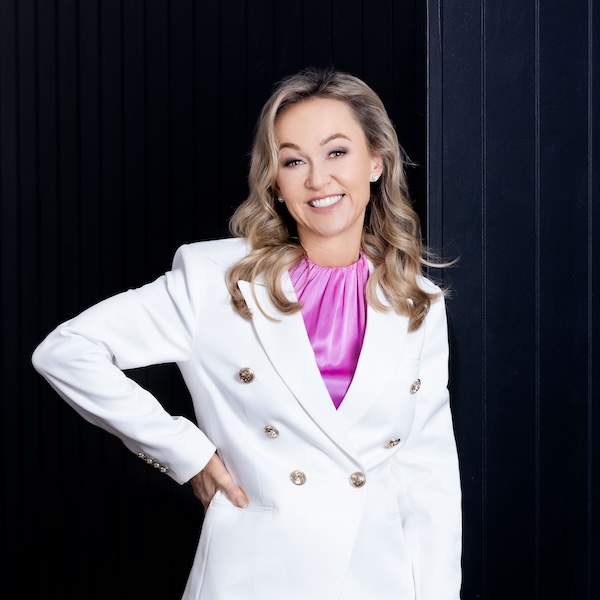You might have grown up to choruses of adults’ reminiscing, often declaring ‘back in my day, things were harder’. It's almost a rite of passage to listen as a parent or grandparent recounts stories of walking to school barefoot, through the snow, uphill both ways, etc.
However, tales of nostalgic hardships gone by seem to have been merely a blip in the lives of young Australians, now overshadowed by multiple recessions, a global pandemic, an ongoing rental crisis, and record high property values.
But what if you could piggy-back off the achievements of older generations to launch your financial security? Perhaps by investing in property from your parents’ spare room?
What is nestvesting?
Enter the 'nestvestor,’ - a term shamelessly coined by us to describe a savvy breed of young Australians flipping the traditional notion of leaving the nest on its head.
Nestvesting relates closely to the more familiar rentvesting – buying an investment property while renting elsewhere.
However, rather than venturing into the rental market, nestvestors remain at home with their parents - partially eliminating one of the notable risks (an insecure roof) while reducing their cash outflows.
This strategy could enable first-time home buying investors to grow wealth while rejoicing in enhanced lifestyle benefits.
Such has been the experience of Brisbane-based nestvestor Roy Kolberg, a small business owner who purchased his first home in the city’s south-eastern suburbs in 2021.
“In late 2020, I felt Brisbane was about to have a ‘moment’ in its property cycle,” Mr Kolberg told Savings.com.au .
“Halfway through 2021, this ‘moment’ was very clearly happening, but I was not in a hurry to move out of home.
“The decision, therefore, became quite simple: I could keep my life exactly as is without missing out on the potential upside of property prices rising.
“Plus, that property would be there as a place to live in the future if necessary.”
Mr Kolberg purchased his investment property in the area he grew up in, ensuring he knew the local demographic and their preferences, as well as “which bits were good and which were bad”.
He highlights that his relationship with his parents is stress-free and due to owning his own business, it made sense for him to pursue nestvesting.
“As a small business owner, you don’t have a salary to anchor your decisions to,” he said. “I am also quite prone to going wherever my nose takes me and pursuing various business ideas on a whim.
“Having a low cost of living in a home maintained by my parents freed me up to pursue my career in this manner.”
Mr Kolberg admits he has a low risk tolerance as an investor and built numerous spreadsheets detailing his projected financial position in various ‘worst-case’ scenarios.
“I underestimated the positives and overestimated the negatives to such a degree that I am now usually in a state of surprise and delight that things are exceeding my expectations,” he said.
But wait: What to consider before nestvesting
But nestvesting won’t be for everyone, and of course many don’t have the option of being able to live with parents.
People entering the property market with the purchase of an investment property will likely miss out on stamp duty waivers and discounts or grants offered to traditional first home buyers.
Not to mention, many dream of moving into their first pad to live the owner-occupier lifestyle.
Mr Kolberg also entered his investment with a large deposit. That’s worth noting as most lenders demand investors have a deposit of at least 10%, compared to the minimum 5% deposit typically offered to owner-occupiers.
Shaun Bond, the Frank Finn Professor of Finance at the University of Queensland Business School, told Savings.com.au buyers should be wary of letting the last few years skew their view of the property market.

Image: Professor Shaun Bond
“We often hear about the success stories, about someone who was lucky enough to buy before the pandemic and now they've enjoyed very large capital gains,” he said.
"It doesn't mean we're going to see those very large capital gains going forward.”
Professor Bond also warns would-be nestvestors that purchasing, owning, and managing a property can be an expensive and fruitless endeavour, noting buyers should analyse why they want to enter the market in the first place.
“Where I hear a lot of conversation about people doing this, is when it’s a substitute for buying in an area that they can't afford.
“That in and of itself is risky because you might be buying an area where prices don't keep up with your preferred location.
“[Potential nestvestors] also need to be aware that being a landlord isn't easy.
“Investing in real estate is very costly – you can have unexpected repairs, tenants who do damage to the property – there're many reasons [property] could be a risky investment and you could end up losing money.”
And of course, buying the property itself is expensive.
While a person can simply walk up to a checkout in a grocery store to buy an apple, buying and selling real estate means engaging with real estate agents, solicitors, banks, and even the government.
“It's important to remember that transaction costs can eat into your overall returns,” Professor Bond said.
“Even though on paper it can look like property is going up, by the time we take into account the cost to trade, particularly if you have a shorter holding period, that can reduce your overall return to the point where it might have been better to save your money in a safer investment that might not have as high a return.”
A means to an end or a journey to the means?
It won’t surprise many that the current climate sees more first home buyers struggling to achieve the sort of borrowing power that would allow them to enter the property market.
High interest rates, an increased serviceability buffer, and cost-of-living pressures mean many looking to enter the market simply aren’t able to borrow as much as others in their position once could.
Such struggles are likely enhanced by Australia’s currently-record-high property prices.
Australian Property Home Loans mortgage broker Adele Andrews told Savings.com.au she’s hearing from more first home buyers testing the waters to see if buying could be on their horizon.

Image: Adele Andrews
Many of those are hinging their homeownership dreams on living at home or in an investment property owned by their parents, potentially paying a nominal rent.
For those people, the prospect of receiving rental income tips them over the line with lenders, allowing them to achieve enough borrowing power to purchase at all.
“If you've got a strong appetite to get into the property market and start creating wealth, there's more than one way to do it,” she said.
“And, in many instances, the preferred way isn't the possible way.
“[Expected] rental income helps boost their serviceability so they can at least get into the property market and start building equity so that when the time comes, they're able to leverage that to buy their own owner-occupied property,” she said.
Looking towards the future, Mr Kolberg doesn’t plan on staying home for much longer.
He notes that, if he chooses to rent, the rental income he realises now will offset that expense.
If he chooses to buy as an owner-occupier, he’ll likely be in the market for something low-maintenance, “like an apartment”.
“I think there’s a ‘double whammy’ factor, where first home buyer owner-occupiers have to deal with the realities of home ownership plus service a mortgage all on their own,” he muses.
“Whereas, by buying an investment property first, I’ve been able to learn about those homeownership costs under a blanket of relative safety with a positively geared property that can absorb unexpected surprises.
“These learnings will definitely have a bearing on choosing the property I live in next.”
Living at home: No longer a faux pas?
Nestvesting could also be a symptom of a wider cultural trend.
Australians are living at home longer, according to the University of Melbourne’s annual Household, Income and Labour Dynamics in Australia (HILDA) Survey.
The length of time young Aussies are spending at home has been on the rise since the early 2000’s.
The latest survey, released in February, found 54% of men and 47% of women aged 18 to 29 are currently living under their parents' roof.
“The social and economic forces that have driven an increase in the number of young adults living with their parents are still present,” said Professor Roger Wilkins, deputy director of the Melbourne Institute: Applied Economic & Social Research and HILDA Survey co-director.
“We’ve seen a rise in higher education participation, declining full-time employment opportunities for young people, a rising cost in housing, and a trend towards later marriage and family formation.”
“The traditional markers of adulthood are happening later in life now.”
One of Professor Roger’s latter points – the cost of housing – exploded on the back of the pandemic, seemingly driven by people taking the leap to live alone or with fewer people, driving the average number of occupants per dwelling lower.
That effectively meant more properties were needed to house the same number of people.
Interestingly, that statistic could arguably be bolstered if nestvesting were to become a notable trend, potentially relieving a small portion of demand from the market.
Additionally, advocacy, education, and research organisation Think Forward places much of the blame for generational inequality on tax loopholes offered to Aussies with assets.
By joining the property ladder from their parents' spare bedrooms, younger Australians could hope to grasp some of those benefits offered to those who hold assets, such as negative gearing tax deductions.
All things considered, nestvesting is more than just understandable, it could perhaps even be inspirational.
Delving into nestvesting and its implications seems to have uncovered a dynamic shift in perspectives when it comes to wealth building and intergenerational support.
The strategy not only challenges traditional views of financial independence, but also highlights how adaptive some young Australians are becoming in order to navigate an increasingly complex real estate market.
But, while many are forced to be innovative in their efforts to get onto the property ladder, that doesn’t mean such innovation is without risk.
The decision to purchase a property shouldn’t be taken lightly. Particularly, by those who haven’t yet discovered what their life may become.
Image by Dane Deane on Unsplash

Ready, Set, Buy!
Learn everything you need to know about buying property – from choosing the right property and home loan, to the purchasing process, tips to save money and more!
With bonus Q&A sheet and Crossword!

